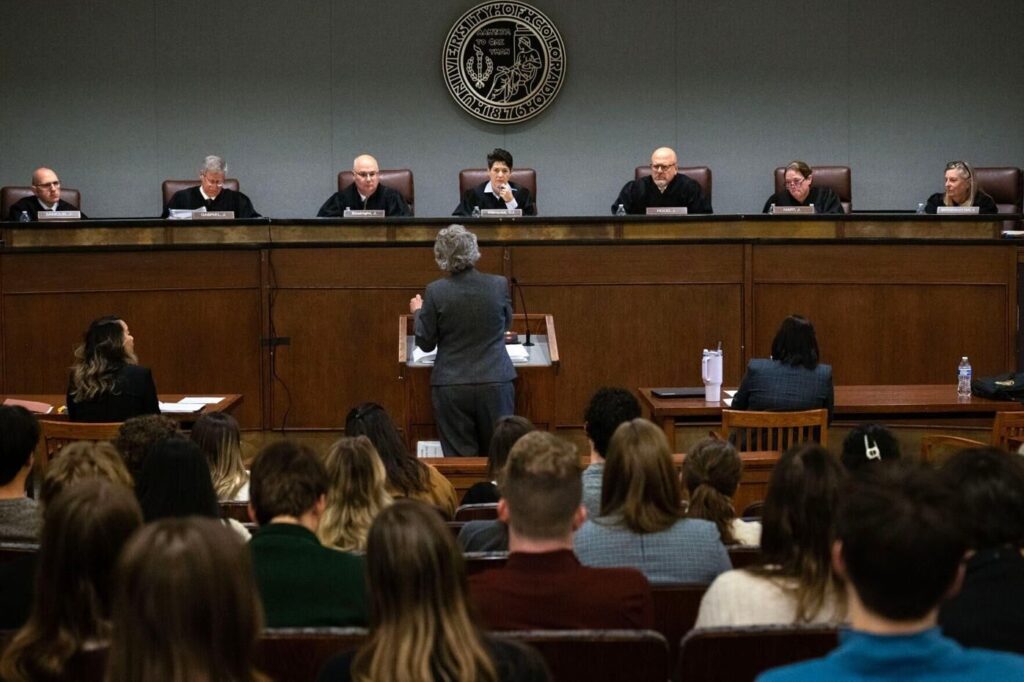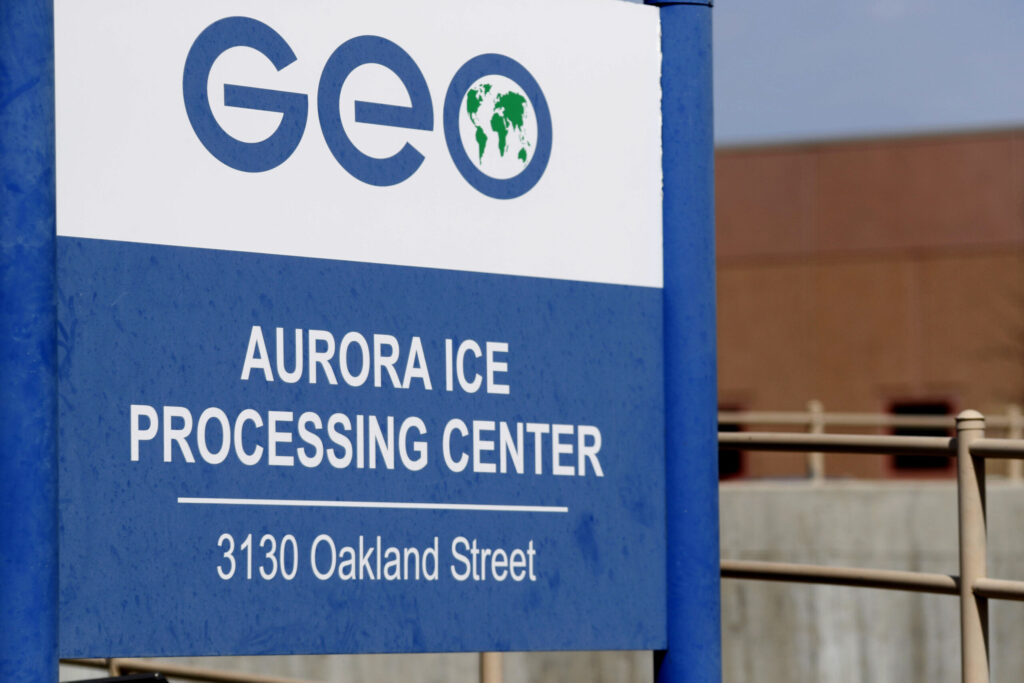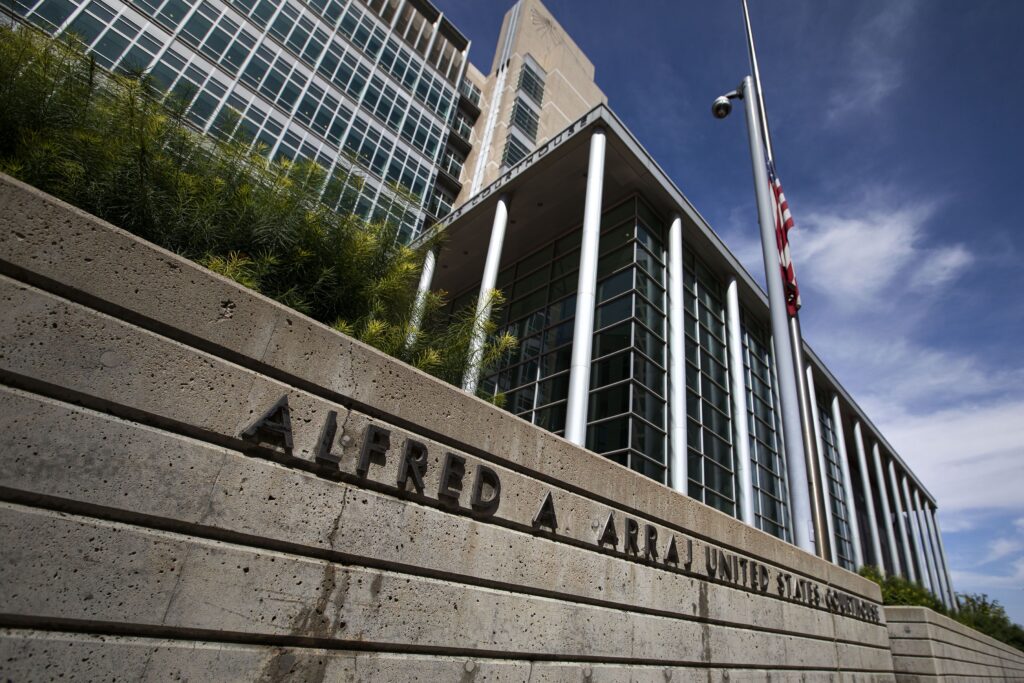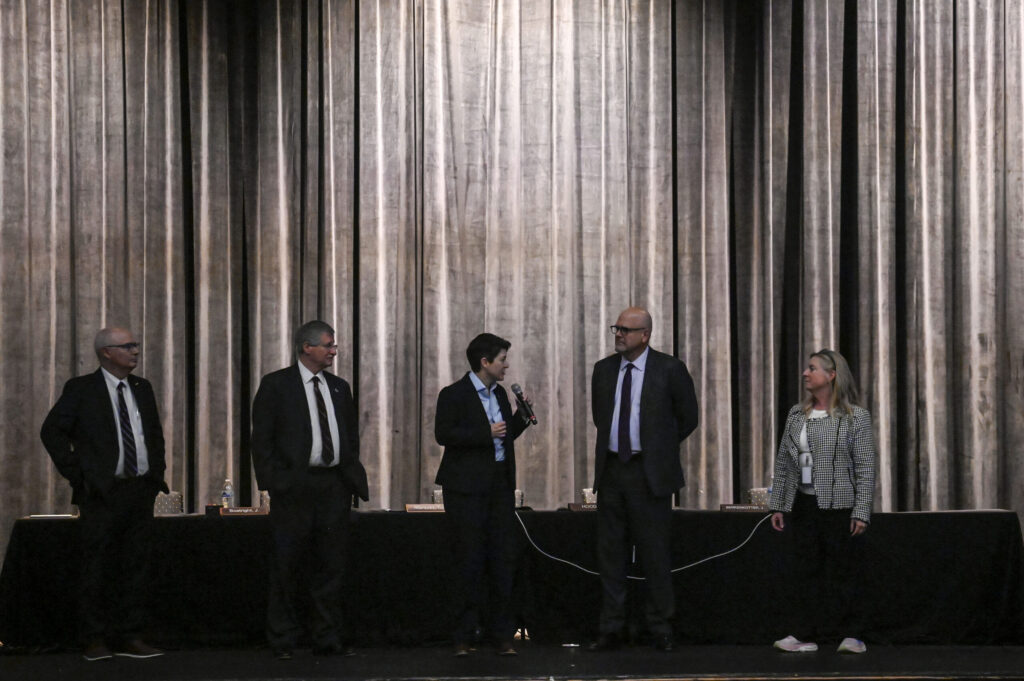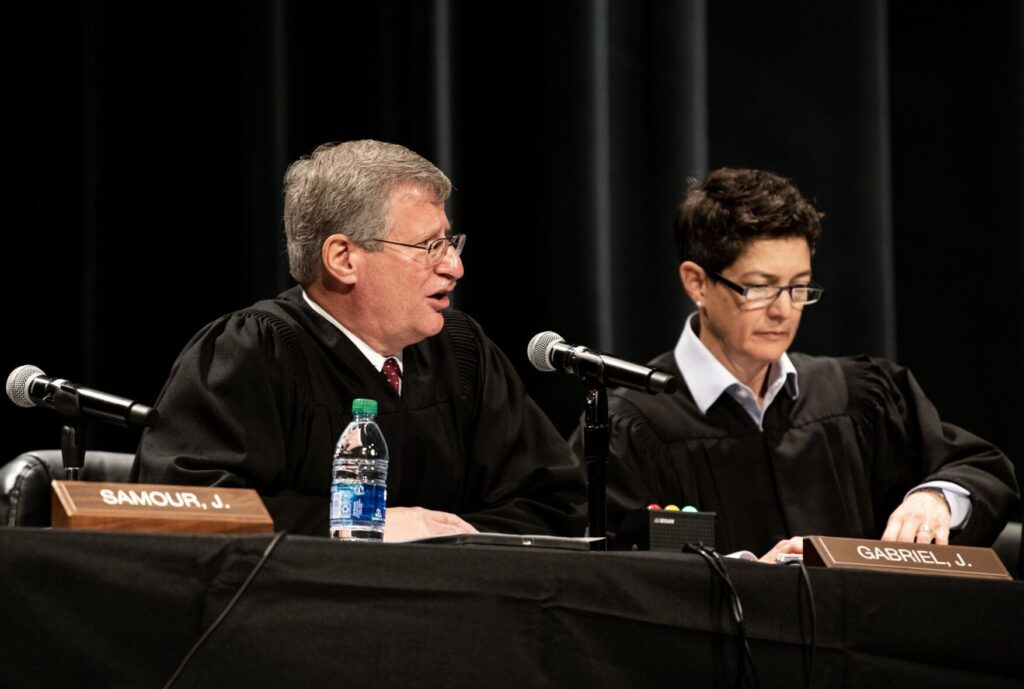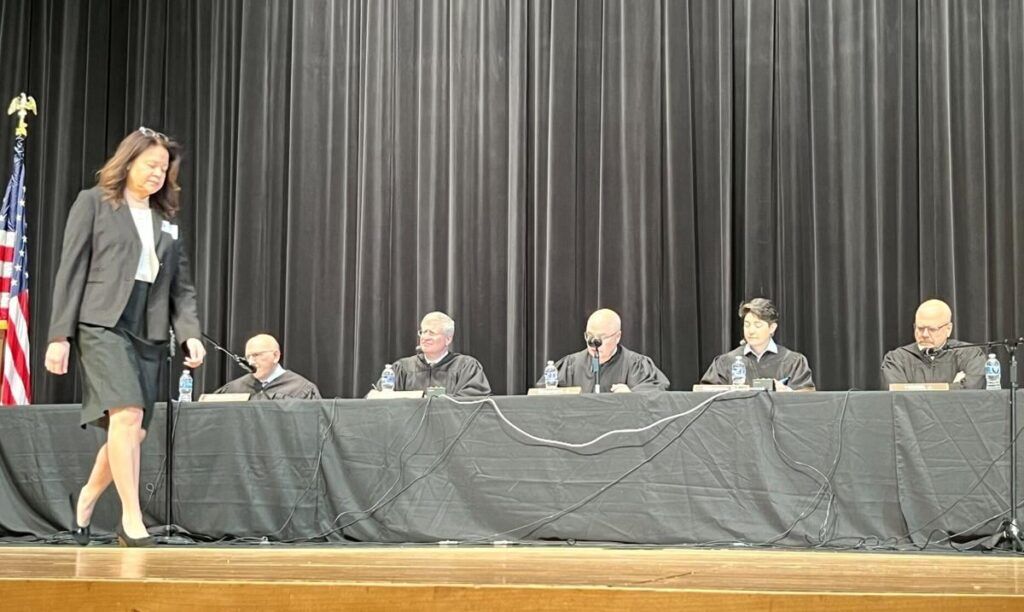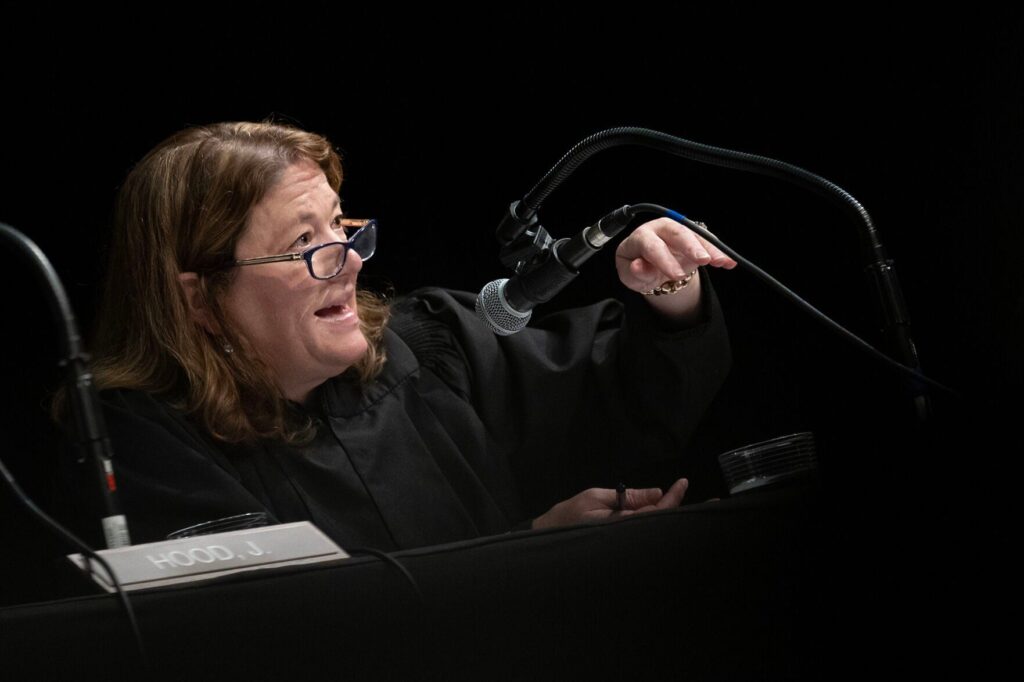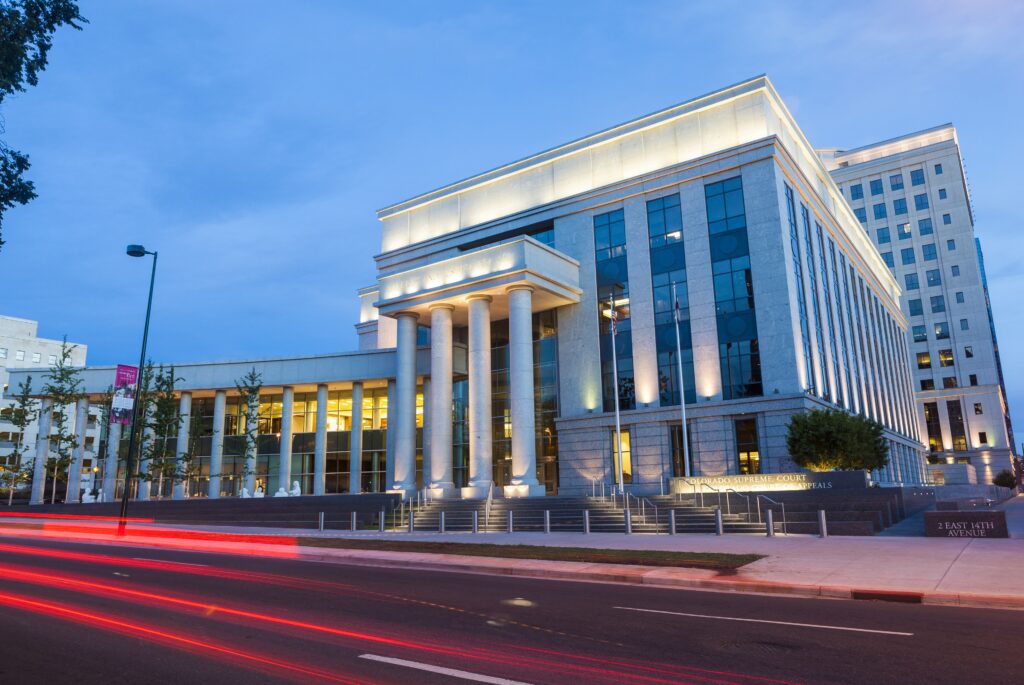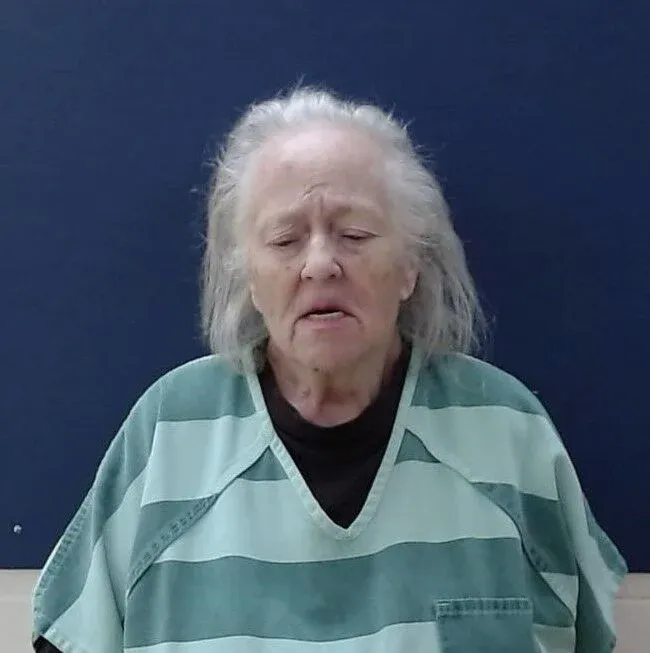Case assignments, new faces and civility: Colorado’s judges speak about developments at federal trial court
Four members of Colorado’s federal bench spoke publicly on Friday about the current workloads among district and magistrate judges, the recent turnover on the U.S. District Court, and observations about problematic behavior among federal litigators.
Chief Judge Philip A. Brimmer said that among the 94 federal judicial districts, the case types Colorado sees are “average” for a mid-sized jurisdiction, with higher-than-average intellectual property, patent and prisoner civil rights cases — the latter owing to Colorado’s numerous prison facilities.
“It feels like we have a higher share of insurance bad faith cases — hail damage cases, car accident cases, slip-and-fall cases,” added Judge S. Kato Crews, who appeared with Brimmer at the Colorado Bar Association’s headquarters for the federal court update.
Crews, an appointee of President Joe Biden, said the average caseload for the active district judges is around 322. Criminal cases make up 20% of judges’ dockets, but Crews’ is only at 8%, owing to his recent appointment this year.

U.S. Magistrate Judge S. Kato Crews testifies at his confirmation hearing to be a district court judge on March 22, 2023.
Crews did, however, bring to his current role 166 cases he alone was responsible for in his prior job as a magistrate judge. Although federal magistrate judges tend to focus on preliminary and administrative matters in cases, they can handle civil lawsuits entirely on their own if the parties consent. Crews inherited the remainder of his cases proportionately from the other district judges.
Brimmer, a George W. Bush appointee, said the three magistrate judges who Biden appointed to the district bench did not need any time to get up to speed, although there is a learning curve for new judges no matter their background.
“No one has a civil practice that would include all the areas of law,” he said. “All judges have to roll up their sleeves, go into court and feel like they don’t have any idea what’s being talked about.”
He further pointed out that while relatively few civil cases go to trial, the volume of motions filed is what drives judges’ workloads.
New judges inherit dockets piece by piece
Recently, Brimmer elaborated, new judges are randomly assigned cases from their colleagues that are in their early stages.
“When Judge (Christine) Arguello and I started, it was still basically each judge can give the two new judges X number of cases. As you can imagine, they got rid of their worst,” said Brimmer. Now, “even if the choice of that particular case is random, the new judge won’t be getting something that is going to trial next week.”
“For the record, though, those of us judges who receive the dockets sometimes question the randomness of the process,” added Crews to laughter.

U.S. District Court Chief Judge Philip A. Brimmer swears in U.S. Magistrate Judge Kathryn A. Starnella during her investiture on Oct. 13, 2023. Photo courtesy of Phil Weiser
Both judges spoke about various initiatives to assist self-represented, or “pro se,” litigants. Brimmer noted approximately one-third of civil lawsuits at the district court are initiated by pro se plaintiffs, including those who are incarcerated. He said a uniform assistance program is difficult because each prison has its own bureaucracy.
“It’s also hard because certain prisoners, they try to game the filing. And it just takes one person where the prison says, ‘That’s it,'” Brimmer said.
Crews told the attorneys that pro se litigants may view them as intimidating due to their status as lawyers. He warned against “over-lawyering” a case in which a self-represented plaintiff may not have a clear understanding of the process.
“I can recall a lawyer responded to a pro se litigant’s discovery response and raised various objections,” Crews said. “The pro se litigant filed objections to the lawyer’s objections, which is not a thing. But for some reason, the lawyer filed objections to the pro se litigant’s objections, which is even more not a thing.”
Brimmer also warned lawyers about going to trial against a self-represented litigant, noting an attorney will “live in infamy” if they lose such a case. He said a pro se litigant’s advantage is at its peak in short trials, when a jury is most forgiving to any missteps.
“You’ve got a better chance of winning if it’s two or three days because as time goes on, the jury becomes less and less sympathetic to the pro se party because it’s so frustrating,” Brimmer said.

The Alfred A. Arraj U.S. Courthouse in downtown Denver. (Photo courtesy of United States District Court – Colorado)
Magistrate judges as the face of the court
The audience then heard from Chief Magistrate Judge Michael E. Hegarty and Magistrate Judge Scott T. Varholak. They explained district judges tend to refer large portions of cases to magistrate judges for handling, only stepping in for pretrial preparations or to address motions that could potentially end the case without a trial.
“In 99% of the civil cases, the district judge probably never sees you in court,” said Hegarty, although there may be exceptions for specific motions that require a hearing. Otherwise, “the physical face of the court for any civil litigant would most typically be the magistrate judges.”
Magistrate judges generally have 50-60 civil cases each in which the litigants have consented to the magistrate judge handling the case in its entirety. Varholak said a “fair number” of those cases involve lawsuits against the federal or state governments. Hegarty added that self-represented plaintiffs who believe they have credible claims against the government also might tend to consent more often.

Attorney Matthew Skeen, U.S. District Court Judges Gordon P. Gallagher and S. Kato Crews, retired U.S. Magistrate Judge Kristen L. Mix and attorney Kevin Homiak speak on a panel about pro bono opportunities for lawyers at Colorado’s federal trial court on May 8, 2024.
“I think they would probably trust us, too, because we know a good federal case when we see one,” said Hegarty, who formerly worked at the U.S. Attorney’s Office. Varholak also served as a federal public defender before becoming a judge.
“When I first took the bench I got very few consent cases,” Varholak said. “The civil bar didn’t know who I was.”
Hegarty, who is retiring in January, predicted the membership of the district court will be constant in the coming years, after a recent period of turnover among five of the seven active district judges and six of the nine magistrate judges.
Varholak advised attorneys to be professional to one another, cautioning that the dynamic between civil attorneys seems different than his experience practicing criminal law.
“I have certain cases where the parties are constantly accusing the other side of some sort of malfeasance. I just look at it and I say, ‘This has to be a miserable way to practice law. This can’t be any fun,'” he said. “Is this level of rancor benefitting your client in any way? And if it’s not — and I assure you it’s not — then why do it?”
The discussion was sponsored by the Federal Bar Association’s Colorado Chapter and the Faculty of Federal Advocates.


